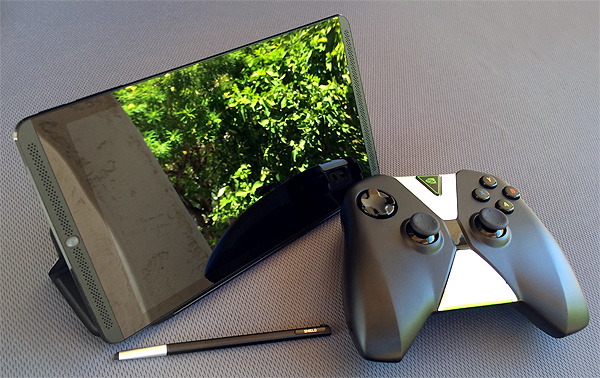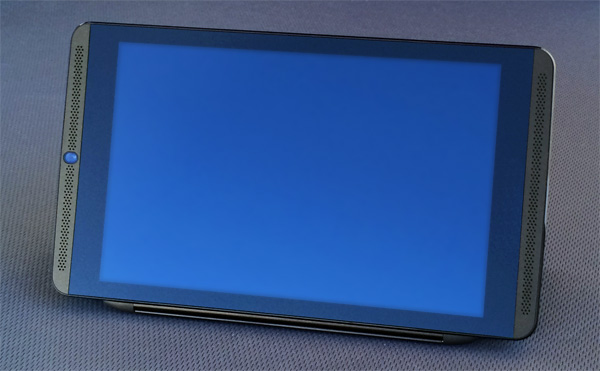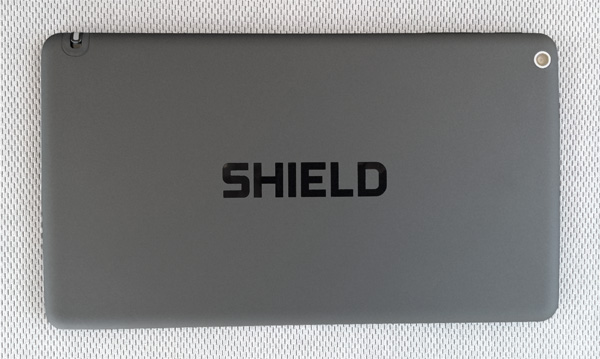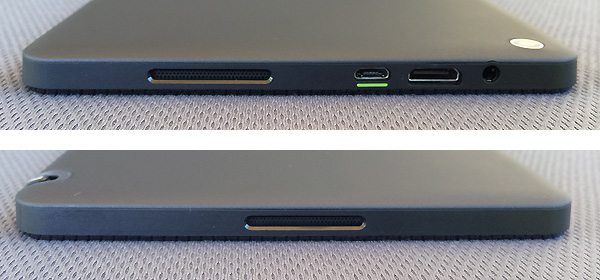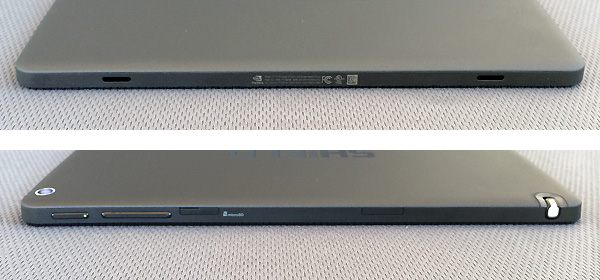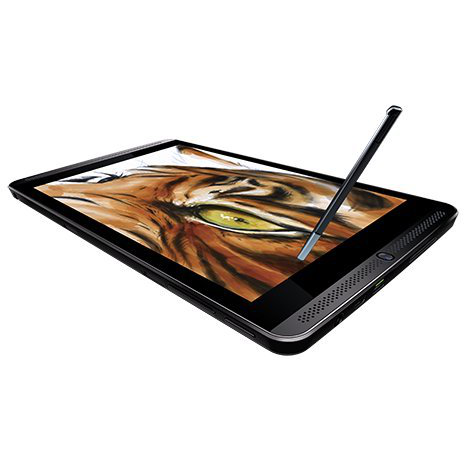Nvidia Shield Tablet And Shield Controller Review
The Shield Tablet, powered by Nvidia’s Tegra K1 SoC, deftly handles browsing and media playback duties. Combining it with the wireless Shield Controller transforms the 8-inch device into an exciting mobile gaming platform.
Shield Tablet: Look And Feel
The Shield Tablet has an all-black, stealth fighter-like appearance. With sleek lines and minimal adornment, its inconspicuous exterior hides the game-rendering weaponry inside.
In spite of its plastic chassis, the tablet maintains a premium feel. It’s suitably rigid during normal use, but will flex a bit if you deliberately try to torque or bend it. Adding to the tactile enjoyment is a soft texture on the back cover that feels more like felt than rubber. While it does improve grip, the material isn't particularly sticky. However, I didn’t have any issues with the device slipping through my hands.
Compared to other 8-inch tablets, the Shield tends to be larger and heavier, which is surprising since it has a smaller battery. Even with its more diminutive screen, the Shield Tablet is taller than the Samsung Galaxy Tab Pro 8.4. It’s also 8% thicker and heavier than Xiaomi's Mi Pad, which is already thicker and heavier than the iPad Mini with Retina Display and Galaxy Tab Pro 8.4. While noticeable in a side-by-side comparison, the extra size and weight aren’t really a problem during regular use. I didn’t have any issues using the Shield Tablet with one hand, either.
The Shield Tablet employs an 8-inch IPS screen with a resolution of 1920x1200 (283PPI), which is less than its peers. This display is a compromise between screen quality, price, and battery life. Using a higher-resolution panel would certainly add to the base cost, forcing the Kepler-based GPU to work harder, consequently reducing battery life. Since text on the screen still looks crisp, and the tablet supports HD video, I feel it’s a reasonable concession.
If there’s an optimal screen size and aspect ratio for a “do everything” tablet, I don’t think we’ve found it yet. The Shield Tablet represents Nvidia’s nexus between usability, portability and price. A larger screen would make games more immersive, but reduce portability and increase cost. A larger screen would also be redundant in Console Mode hooked up to a big-screen TV, which is one of the primary use cases for this tablet. Based on these factors, I think Nvidia’s choice is reasonable, although I personally prefer larger tablets. At least the Shield Tablet eschews the 16:9 form factor. Its 16:10 aspect ratio works better for general tablet use, particularly in portrait mode.
Surrounding the screen is a comparatively thick bezel, especially along the top and bottom. While this adds to the tablet’s overall height, it does give your thumbs a place to rest as you hold on in landscape mode. The screen is flanked by pair of front-facing stereo speakers (a nice touch for a gaming-centric tablet). The only other feature on the front is a 5MP fixed-focus camera with HDR that’s centered in the upper speaker grille.
The back has a simple matte black appearance, rather than the Tegra Note 7's more aggressive-looking stippled back. The only highlights are a slightly recessed, gloss-black Shield branding and the 5MP rear camera with HDR and auto-focus surrounded by a small chrome ring.
Get Tom's Hardware's best news and in-depth reviews, straight to your inbox.
The micro-USB 2.0, mini-HDMI 1.4a and headphone jack reside on the top edge, along with one of the bass reflex ports. There’s another port on the bottom edge.
On the left edge are two slots that engage the Shield Tablet Cover and help hold it in place. The power button is located on the top-right edge in portrait mode, which becomes the top edge in landscape. Below the power button is the one-piece volume rocker, and below that is a covered microSD slot. Further down is another door that appears to be for the micro-SIM card (our review unit is a Wi-Fi only model). The stylus is securely stored in a port in the bottom-right corner.
Current page: Shield Tablet: Look And Feel
Prev Page Availability, Options And Accessories Next Page Shield Controller: Look And Feel-
blubbey Those GPGPU benchmarks are ridiculous in comparison. It looks like a great bit of kit from what I've seen so far. A die shrunk Maxwell should be fantastic. Maybe even a lower clocked version just for power consumption? It'll still perform as well, if not better than the K1 at 750MHz (assuming 2 SMMs) I'd assume.Reply -
Memnarchon "Based on these results, Tegra K1 must be “a neural net processor; a learning computer” sent back through time to destroy all of the other SoCs that could lead a rebellion in the post-apocalyptic future."Reply
Lol this is epic! xD
Anyway, great and unique review. Especially for the so many GPGPU benchmarks.
Nvidia tablet at $299 seems to be a great buy. -
aberkae If maxwell brings double the performance per watt on the same node the next tegra chip on 20 nm node should be a home run for the companyReply -
deftonian Impressive, but I feel it's still missing that "umph" to get me to buy this and carry it around as an added device, next to my phone (Note 3). Maybe I just don't game enough on the android market or steam. Either way, I think it is impressive for a mobile gaming device and all the things it offers. I think they've started a great line and hope it grows into a successful tablet/gaming brand.Reply -
aberkae If maxwell brings double the performance per watt on the same node the next tegra chip on 20 nm node should be a home run for the companyReply -
gio2vanni86 The streaming a game while i'm at my friends house using my PC at home is what has me very interested. Plug into his TV and play amazing games he can only dream of. I'm in.Reply -
vithrell Just wait for Intel's Core M. It wont match the price (CPU alone will cost $300), but in fanless tablet form factor it wont have worthy competitor. Early GPU benchmarks give Core M 55k graphics score in Ice Storm, so more than 1.5x more power than Tegra K1. AND you can run full Windows on it. I wish Nvidia took x86 path with its cpu cores.Reply
